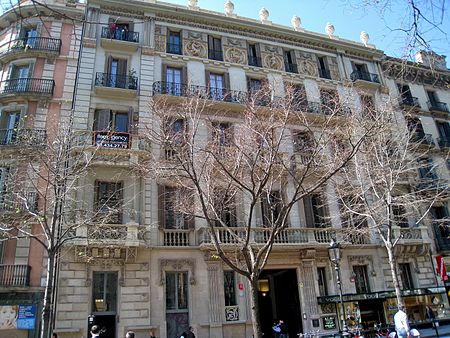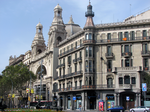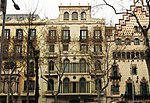Consulate General of the Philippines, Barcelona
Diplomatic missions in SpainDiplomatic missions of the PhilippinesPhilippines–Spain relations

The Philippine Consulate General in Barcelona (Filipino: Konsulado Panlahat ng Pilipinas sa Barcelona, Catalan: Consolat General de les Filipines a Barcelona) is a diplomatic mission of the Republic of the Philippines in Spain, representing the country's interests in Catalonia. It is located on the first floor of the Casa Juncadella along the Rambla de Catalunya in the Eixample district of Barcelona, near major landmarks like the Galeria Mayoral and the Coliseum. Although the current consulate dates from 2020, the Philippines also maintained a previous consulate in Barcelona between 2008 and 2012.
Excerpt from the Wikipedia article Consulate General of the Philippines, Barcelona (License: CC BY-SA 3.0, Authors, Images).Consulate General of the Philippines, Barcelona
Rambla de Catalunya, Barcelona
Geographical coordinates (GPS) Address Nearby Places Show on map
Geographical coordinates (GPS)
| Latitude | Longitude |
|---|---|
| N 41.389416666667 ° | E 2.1650555555556 ° |
Address
Rambla de Catalunya 33
08001 Barcelona
Catalonia, Spain
Open on Google Maps










